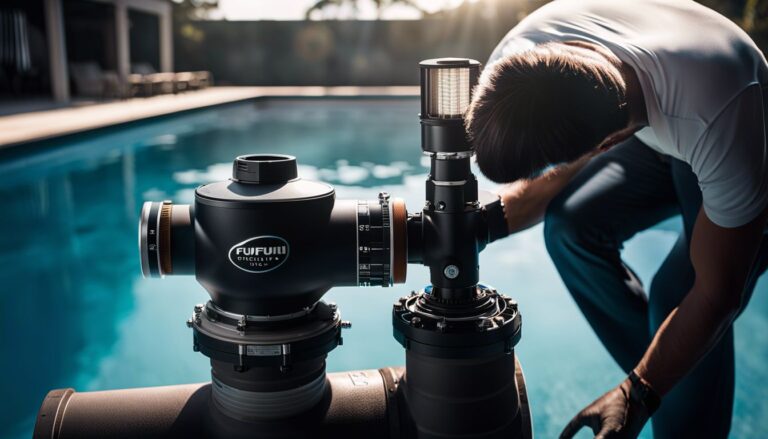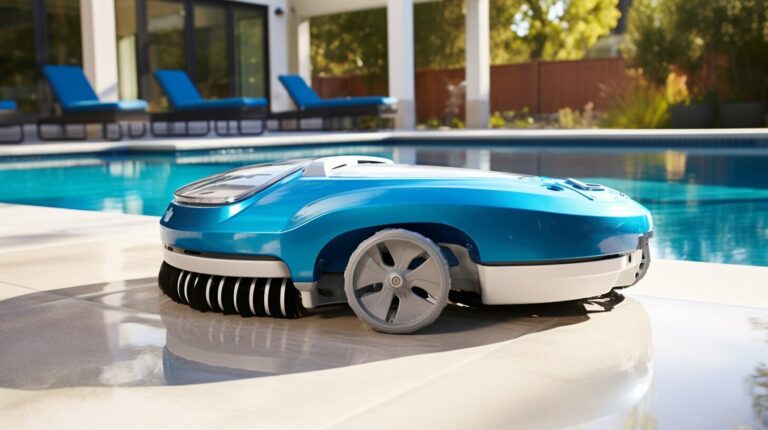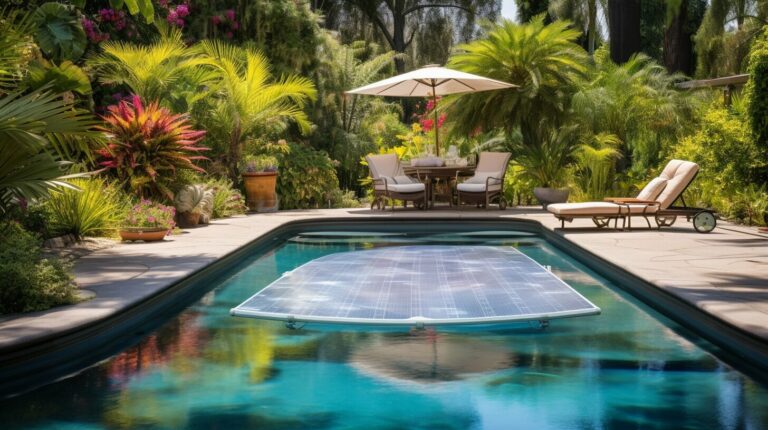What Direction Should Pool Jets Face
Ever notice how your pool seems cleaner on one side than the other? It could be about your pool jets’ direction, those little nozzles pushing water back into the swim zone. In this article, we’ll dive into why angling them just right makes a difference in your swimming experience and maintenance routine.
Stick around—you’re about to make waves in pool care efficiency!
Key Takeaways
- Pool jets should not face skimmers; point them away to help water travel the entire pool before getting filtered.
- Aim pool jets slightly to one side to create circular water movement, improving temperature consistency and debris removal.
- Avoid aiming jets too high as it can cause excess splash and noise and increase heat loss, which leads to higher energy use.
- Address dead areas by adjusting the jet direction towards them and aim some jets downward for better bottom circulation.
- Brush your pool regularly to move dirt into the water current so filters can remove it more effectively.
Importance of Pool Jet Direction

Pool jet direction affects everything from circulation to cleanliness. Good water movement helps distribute chemicals evenly, keeping your swimming pool’s pH levels stable. It also ensures heat spreads throughout the water, avoiding cold spots that can be uncomfortable for swimmers.
Aim those return jets right, and you’ll see a big difference—more transparent water with fewer algae blooms.
Get the jet direction wrong, and problems start showing up. You might find dead spots where the water doesn’t move much; this is where dirt gathers and algae grow. Poorly aimed jets can even cause strain on your pool pump because it has to work harder to push water through a destructive flow path.
Correctly angled jets contribute to efficient filtration, too, grabbing more debris as they spin around your pool.
Proper Direction for Pool Jets

Regarding the proper direction for pool jets, it’s not just about creating ripples on the water surface; positioning is critical to ensure efficient and effective water circulation.
Carefully angled jets can make a difference in your pool’s overall health, propelling clean water throughout every inch and minimizing issues from algae to uneven heat distribution.
Pointing the Jets Away from the Skimmers
Make sure your pool jets are not aimed toward the skimmers. If they point directly at them, clean water gets pulled back into the filter too soon. This means dirty water might not reach the skimmer and won’t get cleaned out.
Turn those jets away from the skimmers to send water around your pool.
This will push water to travel further before hitting the skimmer baskets. It helps mix up all the water to filter more of it. And by doing this, you stop debris from floating on top without getting caught by a skimmer.
Keep debris moving until it’s trapped and removed for a sparkling clean pool!
Encouraging a Circular Water Flow
Aim your pool jets slightly to one side. This creates a gentle spinning motion of the water. Picture the hands of a clock moving. That’s how you want your pool’s water to move, too.
The goal is simple — keep water swirling in a circular pattern from top to bottom.
Circular movement helps mix warm and cool spots for an even temperature throughout your pool. It pushes debris toward the filter, keeping the surface clean and clear. Like ducks glide smoothly on a pond, swimmers enjoy calmer waters without battling against currents or rogue waves.
Have you got areas with no flow? Adjust those jets! Twist them until they guide water into every corner, especially where dirt likes to hide. Next, let’s talk about what happens if you don’t get these settings right.
The Effects of Improper Pool Jet Positioning
Pointing the jets too high can create a lot of splash and noise. It also makes the pool lose heat faster, so you’ll use more energy to keep it warm. This positioning leads to higher chemical use because the sun burns them off quickly with all that water moving around at the surface.
If your jets aren’t set right, you might see areas where dirt hangs out or algae starts to grow—it’s like these spots don’t get any attention from the water flow. Nobody wants to spend their weekend scrubbing when they could be swimming! Getting those jets aimed correctly keeps everything in motion, sweeping debris toward the main drain and crystalizing your pool.
Let’s dive into some handy tips that will help you improve pool circulation for an always-inviting swim.
Tips for Improving Pool Circulation
5. Tips for Improving Pool Circulation: Dive into a treasure trove of strategies designed to enhance your pool’s water movement and clarity—discover how simple tweaks can lead to significant improvements in circulation, keeping your aquatic oasis pristine and inviting.
Watching for Dead Areas
Dead areas in a pool can be tricky spots where water doesn’t move much. These include tight corners and spaces under ladders or skimmers. Pool owners need to watch these spots because still water can cause problems like algae growth.
To fix this, you should adjust your jets to make sure they reach these dead zones.
Aim some of the jets down toward the bottom of the pool for good circulation. This helps mix up any water that’s not moving. Make sure every part of your pool gets attention from the jets.
This way, you’ll have cleaner water and better mixing of chemicals throughout your swimming space. Keep an eye out for parts of the pool with little action—these are places where trouble can start!
Regular Pool Brushing
Keep your pool walls and floor sparkling by brushing them regularly. This simple step stops algae from taking hold and keeps dirt from settling. Brushing sends particles into the water, where the filter can remove them quickly.
Make sure to reach every corner, behind ladders, and around the pool steps.
Use a firm-bristled brush for concrete pools and a softer one for vinyl or fiberglass surfaces. Move the brush in long strokes toward the main drain where the suction is most potent.
This helps push debris into the filtration system, improving your pool’s circulation and cleanliness.
Conclusion
Now you know that pool jet direction makes a big difference. Angle them down and match their flow for the best results. This simple step leads to clear, healthy water in your pool. Take control of your pool’s circulation today – happy swimming!
FAQs
1. Why is proper water circulation essential for my pool?
Good water circulation keeps your pool clean and helps mix chemicals properly, keeping the chemical levels balanced. It also helps prevent algae and stops debris from settling.
2. What’s the best way to position my pool jets for optimal circulation?
Aim your adjustable jet nozzles to create a circular motion in your pool. This makes water flow smoothly and efficiently through the filter system.
3. Should I point the jets towards the deep or shallow end?
Face most of your jets toward the deep end, but angle some downwards to push debris towards the floor drain, improving overall circulation.
4. How do I know if my pool has bad water circulation?
Signs of inefficient water circulation include dead spots with no movement, algae growth, and dirt collecting on surfaces without being pulled into skimmers.
5. Can changing jet direction affect heat loss in my pool?
Yes! Jets pointed at surface areas can increase evaporation, which causes more heat loss; aim them correctly to keep warm water longer.
6. Do smaller pools need different jet directions than larger pools?
Whether you have a cocktail pool or a larger one, achieving that circular movement is key; adjust each jet insert considering size and shape to ensure the best results.






